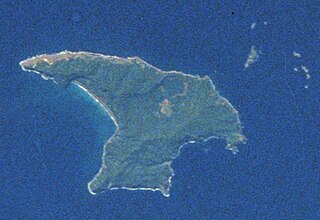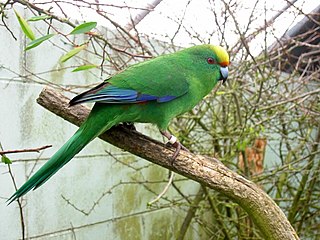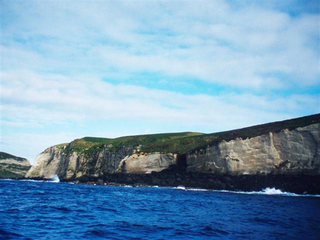
Platycercinae is a subfamily of birds belonging to the family Psittaculidae that inhabit Oceania. It consists of two tribes, the ground parrots and allies (Pezoporini) and the many species of broad-tailed parrot (Platycercini).

A broad-tailed parrot is any of about 35–40 species belonging to the tribe Platycercini. The members of the tribe are small to medium in size, and all are native to Australasia, Australia in particular, but also New Zealand, New Caledonia, and nearby islands.

The three species of kākāriki, or New Zealand parakeets, are the most common species of parakeets in the genus Cyanoramphus, family Psittaculidae. The birds' Māori name, which is the most commonly used, means "small parrot". The etymology is: from kākā, parrot + riki, small. The word is also used to refer to the colour green because of the birds' predominantly green plumage. The patches of red on the birds' rumps are, according to legend, the blood of the demigod Tāwhaki.

Cyanoramphus is a genus of parakeets native to New Zealand and islands of the southern Pacific Ocean. The New Zealand species are often called kākāriki. They are small to medium-sized parakeets with long tails and predominantly green plumage. Most species are forest dwellers, although several of the subantarctic species live in open grassland. The genus formerly had a widely disjunct distribution: while most of the genus ranged from New Caledonia to Macquarie Island, two species were found in the Society Islands, 4,100 km (2,500 mi) away from the rest. Although the islands between these two areas have yielded many bird fossils, undescribed extinct Cyanoramphus have not yet been found on any of them.

Raoul Island is the largest and northernmost of the main Kermadec Islands, 900 km (560 mi) south south-west of 'Ata Island of Tonga and 1,100 km (680 mi) north north-east of New Zealand's North Island. It has been the source of vigorous volcanic activity during the past several thousand years that was dominated by dacitic explosive eruptions.

The Kermadec Islands are a subtropical island arc in the South Pacific Ocean 800–1,000 km (500–620 mi) northeast of New Zealand's North Island, and a similar distance southwest of Tonga. The islands are part of New Zealand. They are 33.6 km2 (13.0 sq mi) in total area and uninhabited, except for the permanently staffed Raoul Island Station, the northernmost outpost of New Zealand.

Malherbe's parakeet is a small parrot endemic to New Zealand, where it is known as the orange-fronted parakeet or orange-fronted kākāriki. In the rest of the world it is called Malherbe's parakeet, as when it was recognised as a species, the name "orange-fronted parakeet" was already used for Eupsittula canicularis, a Central American species. Restricted to a few valleys in the South Island and four offshore islands, its population declined to around 200 in the 1990s, and it is considered critically endangered by the IUCN.

The Antipodes parakeet or Antipodes Island parakeet is a parrot in the family Psittaculidae that is endemic to the Antipodes Islands of New Zealand. It is one of two parrot species found on the islands, and one of only five ground-dwelling parrots in the world. They are long-living birds that may live up to 10 years of age, but the introduction of mice that compete with them for food was a threat to their survival on the Antipodes Islands until the mice were successfully eradicated from the Islands in 2016. Unusually for parrots, they sometimes prey upon other birds, a trait shared by another New Zealand parrot, the kea.

The red-crowned parakeet, also known as red-fronted parakeet and by its Māori name of kākāriki, is a small parrot from New Zealand. It is characterised by its bright green plumage and the red pattern on its head. This versatile bird can feed on a variety food items and can be found in many habitat types. It used to be classified as near threatened as invasive predators had pushed it out of its historical range but it is now at least concern. This species used to occupy the entire island, but is now confined to only a few areas on the mainland and some offshore islands.

The turquoise parrot is a species of parrot in the genus Neophema native to Eastern Australia, from southeastern Queensland, through New South Wales and into North-Eastern Victoria. It was described by George Shaw in 1792. A small lightly built parrot at around 20 cm (7.9 in) long and 40 g in weight, it exhibits sexual dimorphism. The male is predominantly green with more yellowish underparts and a bright turquoise blue face. Its wings are predominantly blue with red shoulders. The female is generally duller and paler, with a pale green breast and yellow belly, and lacks the red wing patch.

The Chatham parakeet, also known as Forbes' parakeet, is a rare parakeet endemic to the Chatham Islands group, New Zealand. This parakeet is one of New Zealand's rarest birds and is classified as Vulnerable on the IUCN Red List, as a result of a range of threats to the species survival, including habitat loss, predation, and hybridization. A number of conservation methods have been employed to assist the recovery of this species, and currently the population trend is considered stable.

Cheeseman Island is a 7.6 ha (19-acre) rocky volcanic island in the southwest Pacific Ocean. It is named after Thomas Frederick Cheeseman of the Auckland Museum, who was on board the New Zealand Government steamer 'Stella' when it visited the island in 1887. It neighbours Curtis Island to the east and lies about 20 km (12 mi) south of Macauley Island. They are part of the Kermadec Islands, an outlying island group of New Zealand, located halfway between New Zealand's North Island and the nation of Tonga.

The Norfolk parakeet, also called Tasman parakeet, Norfolk Island green parrot or Norfolk Island red-crowned parakeet, is a species of parrot in the family Psittaculidae. It is endemic to Norfolk Island.
The Macquarie parakeet, also known as the Macquarie Island parakeet, is an extinct parrot from subantarctic Macquarie Island, an outlying part of Tasmania, Australia, in the Southern Ocean.

Reischek's parakeet is a small green parrot confined to 21 km2 (8.1 sq mi) Antipodes Island, one of New Zealand’s subantarctic islands, which it shares with a congener, the larger Antipodes parakeet.

L'Esperance Rock, formerly known as French Rock and Brind Rock,(named after William Brind) is the southernmost islet in the Kermadec Islands, to the north of New Zealand. It is 80 km (50 mi) south of Curtis Island and 600 km (370 mi) northeast of East Cape on New Zealand's North Island. The smaller L'Havre Rock lies 8 km (5 mi) to the north-west of L'Esperance; it is a reef that barely reaches the surface. L'Esperance Rock is 250 m (820 ft) in diameter with an area of 4.8 ha. It rises to a height of 70 m (230 ft).

The Lord Howe parakeet, also known as the Lord Howe red-fronted parakeet, is an extinct parrot endemic to Lord Howe Island in the Tasman Sea, part of New South Wales, Australia. It was described as full species by Tommaso Salvadori in 1891, but subsequently it has been regarded as subspecies of the red-crowned parakeet. In 2012, the IOC World Bird List recognised it as species.

New Zealand is geographically isolated, and originally lacked any mammalian predators, hence parrots evolved to fill habitats from the ground dwelling kākāpō to the alpine dwelling kea as well as a variety of forest species. The arrival of Māori, then European settlers with their attendant animals, habitat destruction and even deliberate targeting, has resulted in their numbers plummeting. Today one species is on the brink of extinction and three other species range from Vulnerable to Critically Endangered, all impacted by invasive species. Further parrot species were not introduced by acclimatisation societies, but occasional releases, both deliberate and accidental, have resulted in self-sustaining populations of some Australian species. New Zealand was identified among the highest priority countries for parrot conservation in the world, due to its parrot diversity, endemism, threats, and having more threatened parrot species than expected.

Macauley Island is a volcanic island in New Zealand's Kermadec Islands, approximately halfway between New Zealand's North Island and Tonga in the southwest Pacific Ocean. It is part of a larger submarine volcano that features a 10.5 by 7 kilometres wide underwater caldera northwest of Macauley Island. Two islets, Haszard Island and Newcome Rock, lie east offshore of Macauley Island. The island is mostly surrounded by high cliffs that make accessing it difficult; the inland parts are mostly gently sloping terrain covered with ferns and grasses.
















